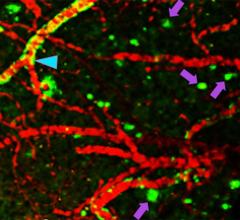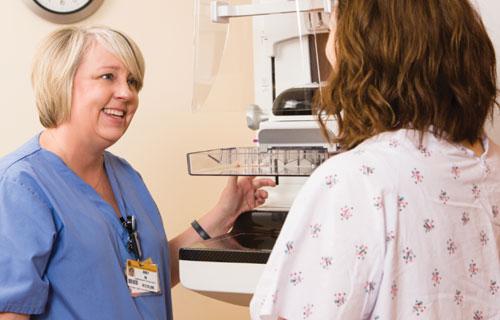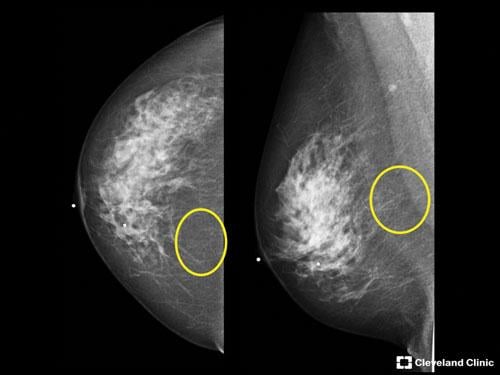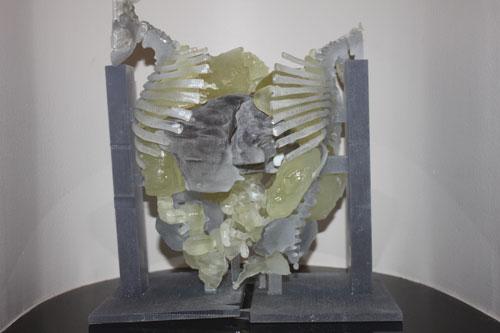A study by University of North Carolina Lineberger Comprehensive Cancer Center researchers has found that younger, uninsured women in North Carolina had higher odds of missing a 60-day window for getting follow-up after an abnormal mammogram, even though research underscores the importance of timely follow-up.
November 2, 2016 — By the time unambiguous signs of memory loss and cognitive decline appear in people with Alzheimer’s ...
Eizo Inc. announced the release of the RadiForce GX550, a 21.3-inch, 5 megapixel monitor for viewing detailed digital breast tomosynthesis and mammography images. It is the successor model to the RadiForce GX540 and features superior imaging capability and ease-of-use.
SPONSORED CONTENT — Fujifilm’s latest CT technology brings exceptional image quality to a compact and user- and patient ...
Researchers at Stanford University have demonstrated for the first time the use of a dual optical and positron emission tomography (PET)/computed tomography (CT) activity-based probe to detect atherosclerotic plaques. The study is published in the October issue of The Journal of Nuclear Medicine.
November 1, 2016 — Two new studies have documented the value of the BioZorb marker in improving the treatment of women ...

SPONSORED CONTENT — Fujifilm’s latest CT technology brings exceptional image quality to a compact and user- and patient ...
Specifically training oncologists and their patients to have high-quality discussions improves communication, but troubling gaps still exist between the two groups, according to a new study in JAMA Oncology.
SPONSORED CONTENT — EnsightTM 2.0 is the newest version of Enlitic’s data standardization software framework. Ensight is ...
Konica Minolta announced it will be introducing a series of new ultrasound accessories and technologies at the 2016 annual meeting of the Radiological Society of North America, Nov. 27-Dec. 2 in Chicago.
For a long time, the ongoing joke on the floor of the McCormick Place after Thanksgiving was that RSNA stood for Real Systems Not Available. And, like all humor that lasts, there is truth to it. But that truth is changing.
Using magnetic resonance imaging (MRI), researchers at Washington University School of Medicine in St. Louis have identified areas in the brains of children with Tourette's syndrome that appear markedly different from the same areas in the brains of children who don't have the neuropsychiatric disorder.
Did you know that approximately one-third of all the data in world is created by the healthcare industry and that ...
Mammography has been the gold standard for breast cancer screening ever since it was proven to reduce mortality in clinical trials in the 1960s. A 2015 report from the U.S. Department of Health and Human Services (HHS) revealed, however, that only 66.8 percent of women age 40 and over — the demographic traditionally targeted for screening — had received a mammogram in the previous two years.1 Understanding of fibroglandular breast density and its impact on cancer detection, as well as new screening guidelines that challenge conventional wisdom, are among the factors impacting compliance rates, and they suggest that screening has evolved beyond the one-size-fits-all approach of using mammography alone.
Recently, I was invited to participate in a roundtable discussion focused on uncovering the challenges and ...
Healthcare spending is on the rise. According to a 2014 forecast by FMI, a market research group, total global healthcare spending will reach $52 billion by 2018 — less than two years away. Further research shows that nearly half of the money (40 percent) will be spent on equipment, an encompassing term that includes everything from beds to gurneys to imaging equipment. Radiology actually makes up the lion’s share of equipment costs, accounting for approximately 1/5 (depending on the type of facility) of total equipment expenditures, per a 2015 report from market research firm Medical Architecture Planning Systems. At the same time, it is also a major revenue driver for hospitals, with radiology expected to account for $49 billion of total global medical imaging revenue by 2020, according to BCC Research, a market research company.
Having the most efficient clinical workflows with enhanced diagnostic capabilities is a major goal for clinicians and ...
As healthcare continues to march forward with numerous reforms, it falls to its various accrediting bodies to set standards to guide actual progress. Radiology is subject to many such accrediting bodies, but perhaps the largest is the Joint Commission, which oversees accreditation for all healthcare specialties. The most recent updates — including changes to the survey process itself as well as the scoring system — could have a major impact on radiology departments as a whole. Judith M. Atkins, RN, MSN, president and CEO of McKenna Consulting, spoke to radiology administrators at the 2016 annual meeting of the Association for Medical Imaging Management (AHRA) to help them parse through some of the latest updates and decide how best to address them.
Science fiction offers a lot of ideas for creating new body parts on demand, and the advancement of 3-D printing (also called additive manufacturing) is slowly translating this idea into science fact. Today, the 3-D printed anatomic models created from patient computed tomography (CT), magnetic resonance imaging (MRI) or 3-D ultrasound imaging datasets are used for education and to plan and navigate difficult procedures. These models are used to teach about complex or rare cardiac or congenital conditions that up until recently could only be seen using examples extracted from cadavers. Anatomical models of rare cardiac anatomy can be printed on-demand from CT scans of surviving patients.
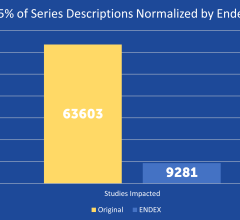
SPONSORED CONTENT — EnsightTM 2.0 is the newest version of Enlitic’s data standardization software framework. Ensight is ...
I doubt any of us will forget 2016. Events, both tragic and bizarre, have owned the headlines and have provided more than a little water cooler fodder. As we close another year of activity within our own world of medical imaging, we too have had plenty to talk about. From acquisitions to rebranding; from new product releases to updated vendor platforms. There was nary a week that went by without something interesting hitting my feeds. Here are some important developments that I believe are making waves and setting the course for imaging, specifically enterprise imaging, as we move further into the second half of this second decade of the 21st century.
With the New Year nearly upon us, the diagnostic imaging industry will finally begin to realize the effects of Section 502 of the Consolidated Appropriations Act of 2016. For more than a year, the industry has been humming with talk of anticipated reduction of Medicare payments, expected to impact diagnostic imaging facilities still using analog and computed radiography (CR) technologies. As we are well aware, Section 502 of the Consolidated Appropriations Act of 2016 provides that Medicare reimbursements will be reduced by 20 percent per year for providers submitting claims for analog X-ray studies beginning this year. From 2018 through 2022, payments for imaging tests performed on CR equipment will be reduced by 7 percent, with a 10 percent reduction beginning in 2023.
Beginning Jan. 1, 2017, the Centers for Medicare and Medicaid Services (CMS) will begin enforcement of the Consolidated Appropriations Act of 2016, a piece of legislation that incentivizes healthcare providers to transition imaging departments to digital radiography (DR).
The past decade has witnessed significant developments in ultrasound technologies, ranging from portable devices, wireless transducers to 3-D/4-D ultrasound imaging and artificial intelligence. Researchers and scientists are endeavoring on developing technologies that simplify diagnostic procedures, improve efficiency of clinicians and enhance image quality. These research and development activities focus on improving overall quality of patient care. In addition, manufacturers are placing an emphasis on implementing automation in premium-tier systems, portable devices and point-of-care (POC) solutions. The prime focus of vendors will be on offering cost-effective devices with growing innovation and competition in the global industry.
As hospitals begin replacing their first-generation 64-slice computed tomography (CT) scanners after a decade of use, there are several considerations evaluation teams should think about when looking at the newer-generation scanners. Chief among these is the idea that more slices makes for a better scanner — which CT experts say is not necessarily the case, and there are costs versus benefits to consider when looking at high-slice systems.
For all the benefits of medical imaging, most forms come with the inherent danger of radiation exposure. Public radiation exposure has increased significantly overall in the last 30 years, and according to a 2006 report from the National Council on Radiation Protection and Measurements (NCRP), medical imaging accounted for nearly half (48 percent) of all public exposure that year. Several high-profile cases of excessive radiation exposure due to medical imaging have brought the discussion into the public eye, which in turn has spurred greater focus on radiation safety among healthcare facilities and their various regulatory bodies.


 November 02, 2016
November 02, 2016 
